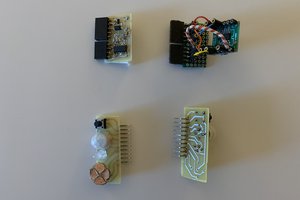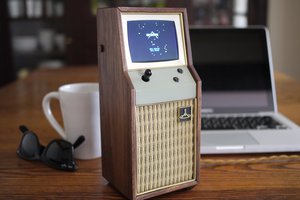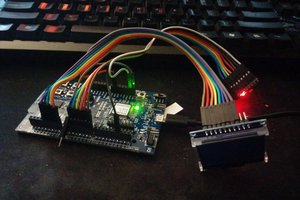This project came about as a result of the Hackaday World Create Day meeting at Oxford Hackspace.
So... How do you stimulate a dementia patient?
When brainstorming for this project, the first ideas mentioned involved touchscreens, tablets, and apps. Then it was pointed out that a typical dementia patient is not one of the digital native generation. The example given was that if you gave them a rotary phone they'd use it without a second thought, but an iPhone would be too difficult for them. Thus the challenge is not just to stimulate them, but to do so with something they would find familiar or intuitive enough to use.
Of course, every patient is different. Some might interact with a box of tools, others with a golf club, yet more with craft work. A joystick or some buttons just aren't going to cut it.
We brainstormed around, and finally came up with the Wiimote. It's a controller in which the movement is the key rather than the controller buttons, it becomes an extension of your hand and exactly what the item you're controlling on the screen is. Our idea is that if you put it in the hands of an older person it will be intuitive to the extent that they will use it immediately.
Our idea then is to pair a Wiimote with a computer - probably a Raspberry Pi in the end rather than a Wii for cost reasons - and have it used to play simple interactive activities. Thus the patient does not face a steep learning curve or too much unfamiliarity, but does receive some stimulation from it.
 Iulian Arcus
Iulian Arcus

 Mike
Mike
 MicroHex
MicroHex
 Matthew McCardle
Matthew McCardle